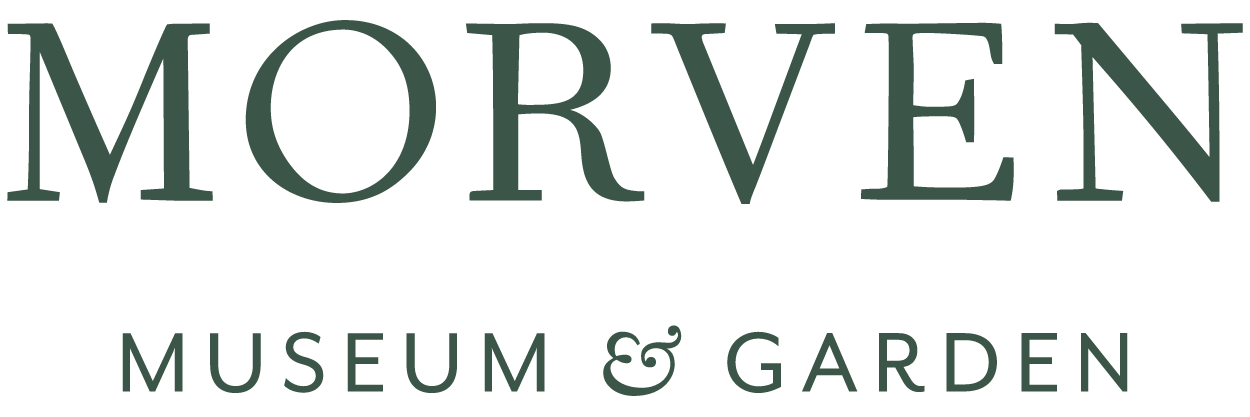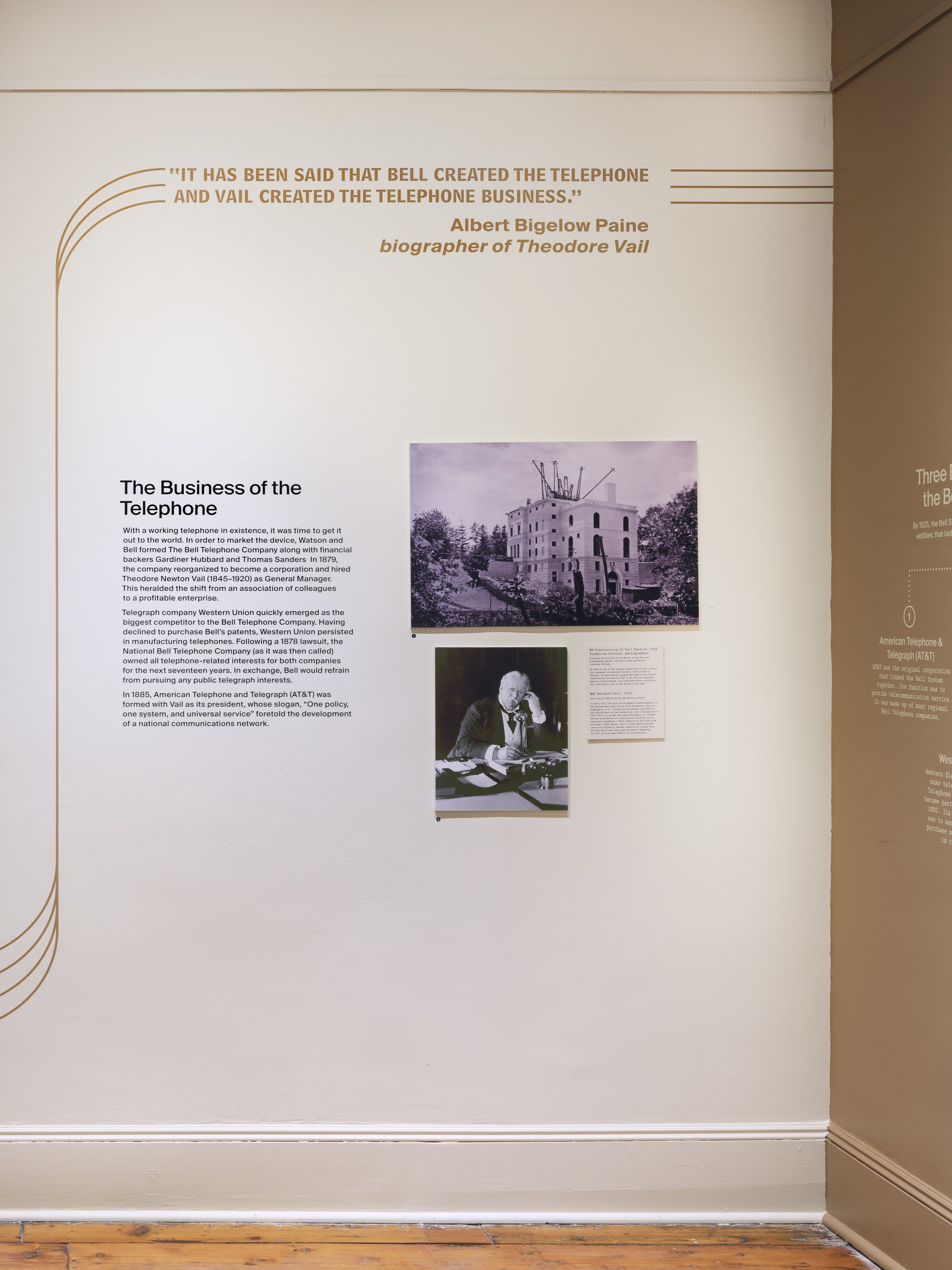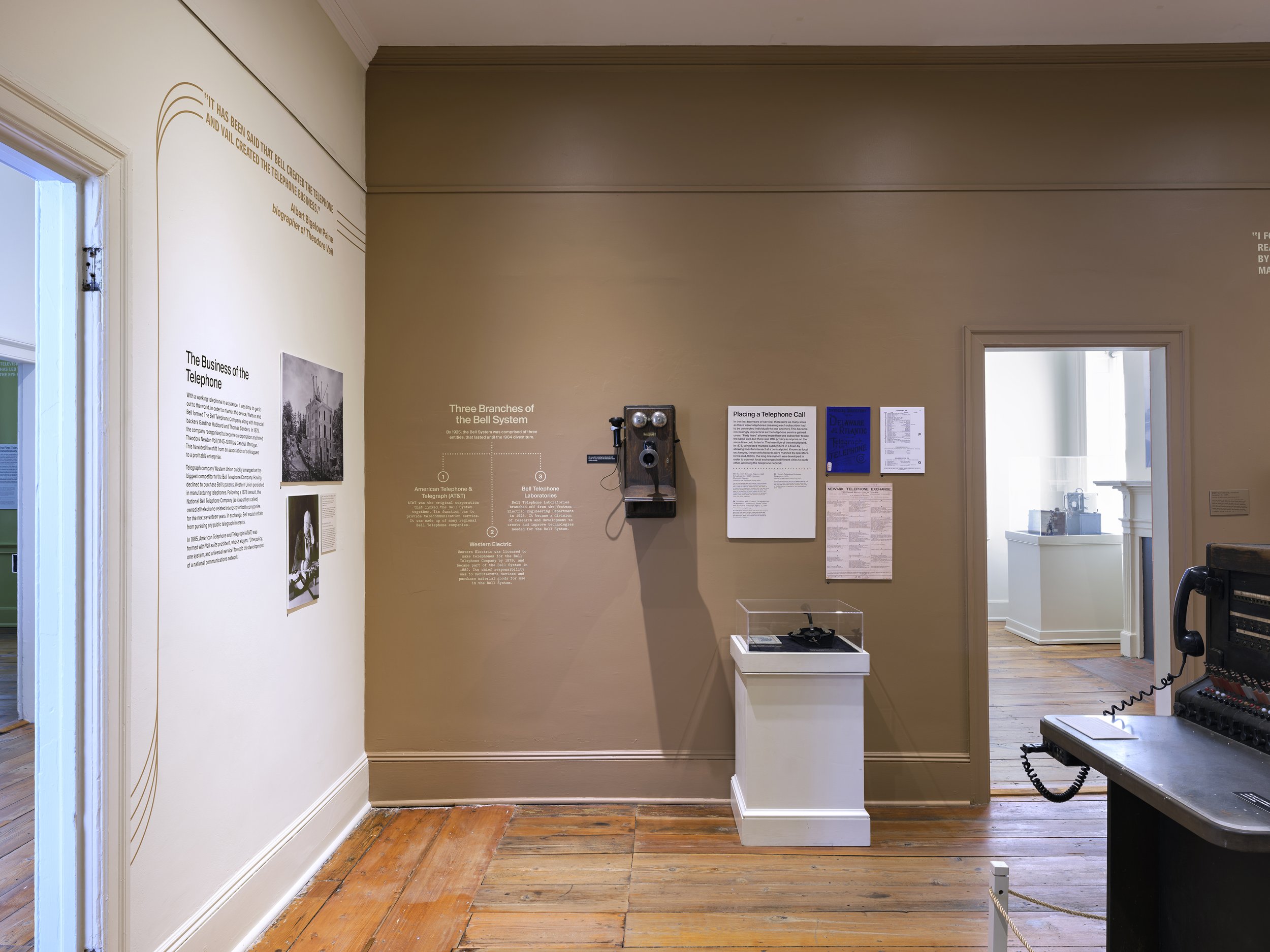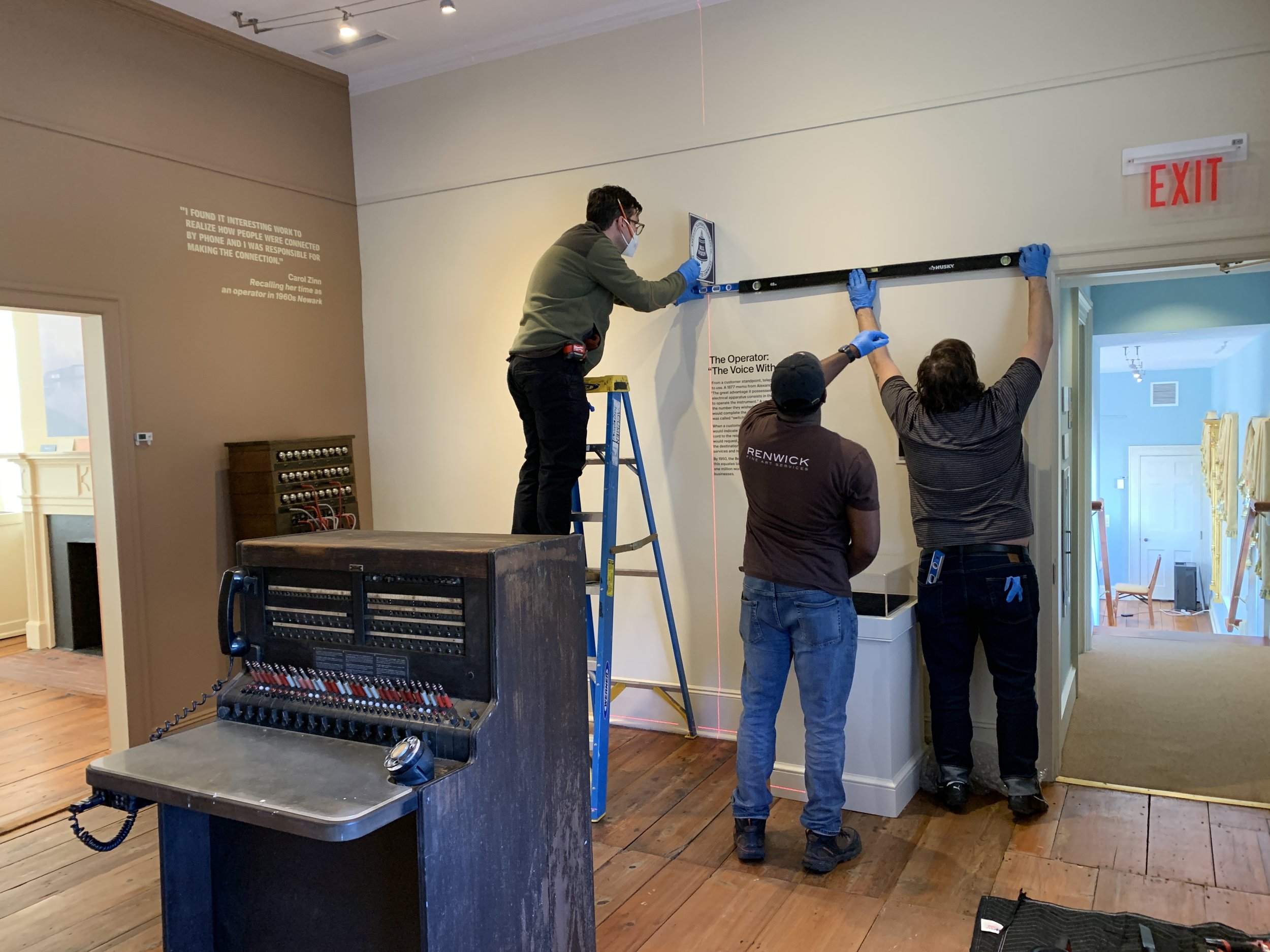Gallery 1
Early days of the telephone and switchboard operators.
Click here to head back to the Ma Bell landing page.
The Business of the Telephone
Three Branches of the Bell System
With a working telephone in existence, it was time to get it out to the world. In order to market the device, Watson and Bell formed the Bell Telephone Company along with financial backers Gardiner Hubbard and Thomas Sanders. In 1879, the company reorganized to become a corporation and hired Theordore Newton Vail (1845-1920) as General Manager. This heralded the shift from an association of colleagues to a profitable enterprise.
Telegraph company Western Union quickly emerged as the biggest competitor to the Bell Telephone Company. Having declined to purchase Bell’s patents, Western Union persisted in manufacturing telephones. Following a 1878 lawsuit, the National Bell Telephone Company (as it was then called) owned all telephone-related interests for both companies for the seventeen years. In exchange, Bell would refrain from pursuing any public telegraph interests.
In 1885, American Telephone and Telegraph (AT&T) was formed with Vail as its president, whose slogan, “One policy, one system, and universal service” foretold the development of a national communications network.
Click here to learn more about the early telephone.
Placing a Telephone Call
In the first two years of service, there were as many wires as there were telephones (meaning each subscriber had to be connected individually to one another). This became increasingly impractical as the telephone service gained users. “Party lines” allowed more than one subscriber to use the same wire, but there was little privacy as anyone on the same line could listen in. The invention of the switchboard, in 1878, connected multiple subscribers in a town by allowing lines to intersect at a central point. Known as local exchanges, these switchboards were manned by operators. In the mid-1880s, the long line system was developed in order to connect local exchanges in different cities to each other, widening the telephone network.
Click here to learn more about placing calls.
Interior of Newark Telephone Company Directory, 1898 with dialing instructions and toll rates.
Collection of AT&T Archives and History Center.
The Operator: "The Voice With a Smile"
Switchboard Operators and Supervisors, Rockaway, NJ, 1930s.
Collection of AT&T Archives and History Center.
From a customer standpoint, telephones were relatively easy to use. A 1877 memo from Alexander Graham Bell, explained, “The great advantage it possesses over every other form of electrical apparatus consists in the fact that it requires no skill to operate the instrument.” A user would simply need to say the number they wished to call, at which point the operator would complete the call by making a wire connection. This was called “switching.”
When a customer picked up the receiver on their end, a light would indicate to the operator that she needed to plug her cord to the relevant jack, connecting her to their call. She would request, “Number please!” to get information on the destination of the call. Operators acted as information services, and responded to emergency calls.
By 1950, the Bell System employed over 340,000 operators – this equates to one in thirteen working women. An additional one million women operators were employed by private businesses.
Click here to learn more about Operators.
Early Films
These early films from the AT&T Archives all promote the work of the operator as important and respectable employment for young women. The switchboard office was not only a place to earn money, but also to make friends with other young women, as well as to be promoted to higher positions. The employment process included a physical examination and training classes with practice calls.
Her Right Place, 1929
Click here to move to the next room in this exhibition, Gallery 2.







